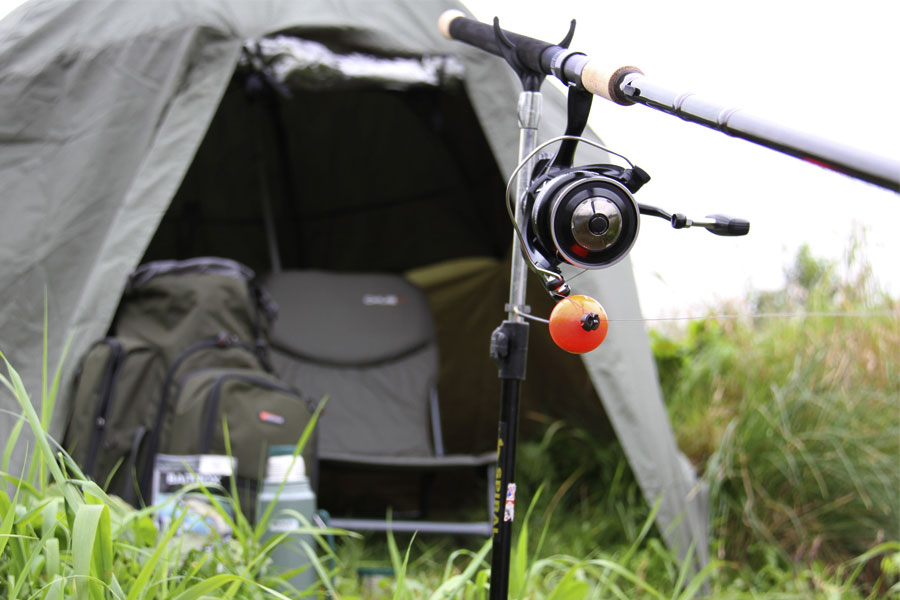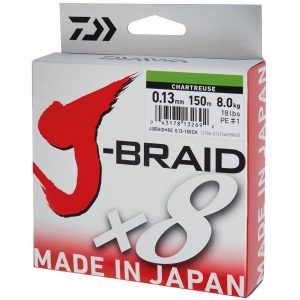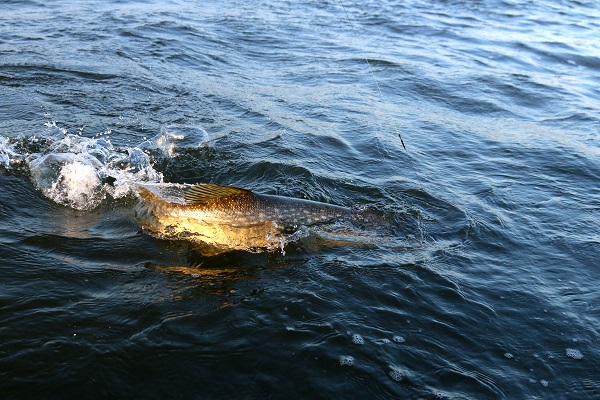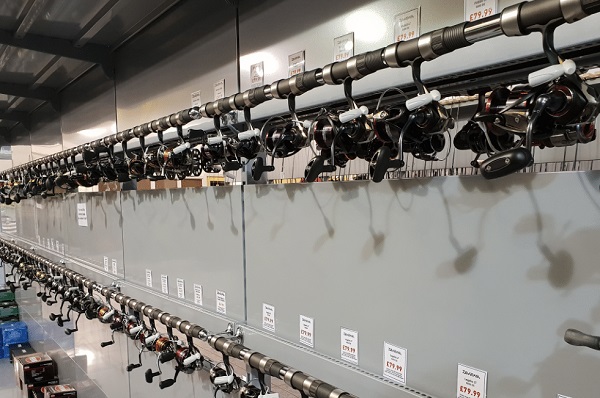Pike bait fishing can be a fantastic opportunity for you to land a large specimen and tackle one of the UK’s most aggressive freshwater predators. In this article, we will go through all the pike fishing tackle required to bait fish for pike. The traditional pike fishing season runs from October to March but you can fish all year round in Scotland. The winter months are an exciting time to target specimen pike as they are at their heaviest weight at this time of year, as they feed up in preparation for spawning.

RODS
Pike bait rods need to be powerful to tame large specimen predators and capable of punching large baits to the horizon as well as dealing with the close in lunges during a hard fight. A progressive action rod gives you the backbone to deal with casting heavy leads and baits while softening those hard runs/lunges at close quarters. Progressive action rods or through action rods are rods that bend all the way through from the rod tip to the butt end of the rod.
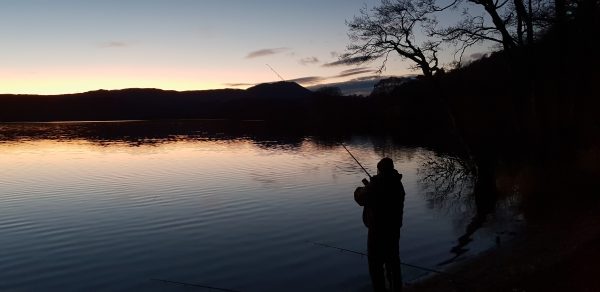
A powerful rod is required for fishing large expanses of water.
Depending on the style of bait fishing, this will determine what rod you will require for the job.
Fishing in the margins will not require a heavier test curve rod. A 12ft 2.5lb test curve rod will suffice, this test curve of rod is also ideal for smaller baits and smaller leads for a more finesse presentation.
For a general all-round good purpose pike rod, a 12ft 3lb test curve rod will cover the majority of the bait fishing situations that you will encounter.
For heavier bait work a 12ft 3.5lb test curve is recommended, this is an ideal rod for casting bigger leads (3oz) and bigger baits. This rod is also ideal for distance casting or fishing at a distance in general, it has a lot more backbone for casting and is ideal for setting hooks at a distance.
Why not check out our range of dead bait rods and see if we have something that fulfils your fishing needs:
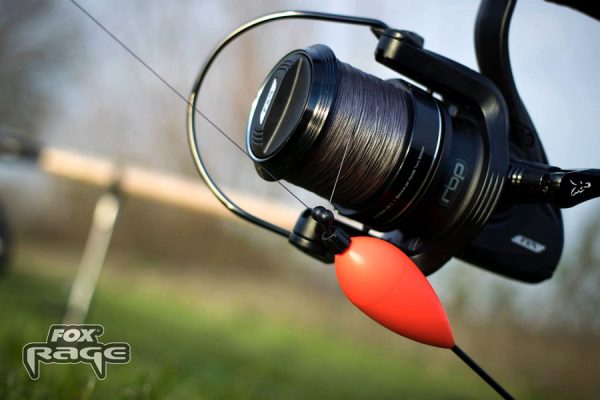
The Trap Is Set
REELS
When it comes to reels, there are a few different styles that we would recommend for pike fishing:
Big Pit Reels
Designed for increased cranking power and better casting performance the big pit reel will deal with heavier bait fishing applications and is ideal for long range work. These styles of reels are usually fished with a more traditional approach. With a rear bite indicator that is set with an open bail arm to minimise all resistance during a run. When looking at big pit reel sizes, we recommend anything from a 5000 – 12000 size reel.

A big pit reel provides increased cranking power, ideal for distance fishing.
Baitrunner/Free Spool Reels
A free spool reel provides a secondary drag system which can be manually engaged/disengaged with a simple switch/lever which is located at the rear of the reel. This secondary drag system is engaged after your bait is in the water, it allows for minimised resistance during a run but still allowing you to keep a taut line at all times, which keeps you in contact with the fish before the strike and enhances bite detection. When looking at freespool/baitrunner size reels, we would recommend anything from 6000 – 10000 size reel. For more information on balanced rod and reel set ups, feel free to call us, or why not pop in and get hands-on with different rod and reel combinations to see what suits your style of fishing.
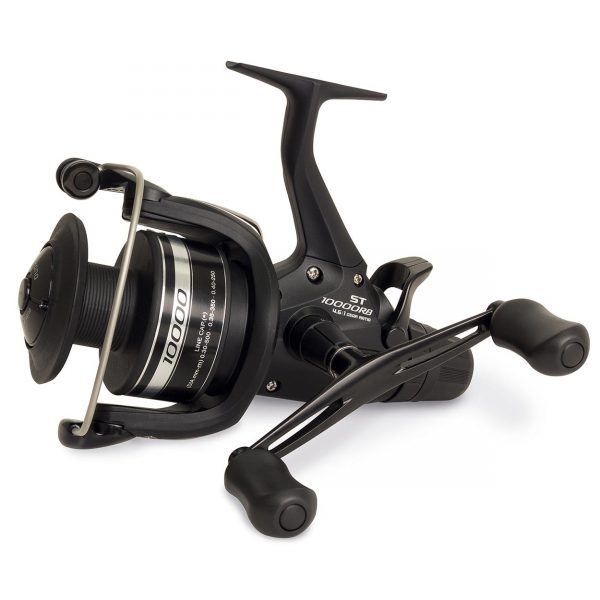
A Baitrunner/Freespool is a very versatile reel.
INDICATION
Pike fishing requires sensitive bite indication; this eliminates the possibilities of deep hooking.
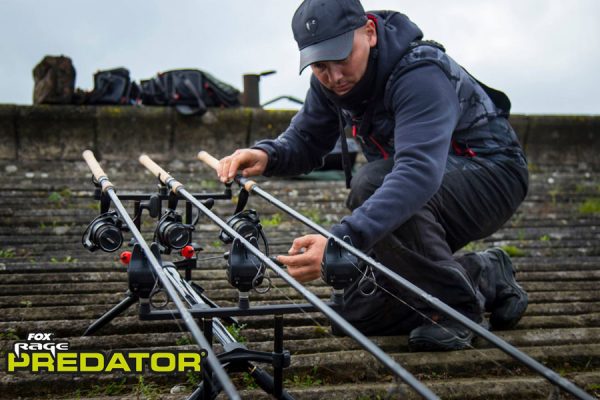
Visual
Using a visual indicator allows you to see a visual indication of the run/take progressing.
There are two styles of visual indicators available:
Floats
Floats are a great form of visual bite indication and a very exhilarating form of fishing. Nothing beats that moment when the float slides away under the surface. There are various floats for different venues and scenarios, here is a brief description of some of the floats and the applications they are used for:
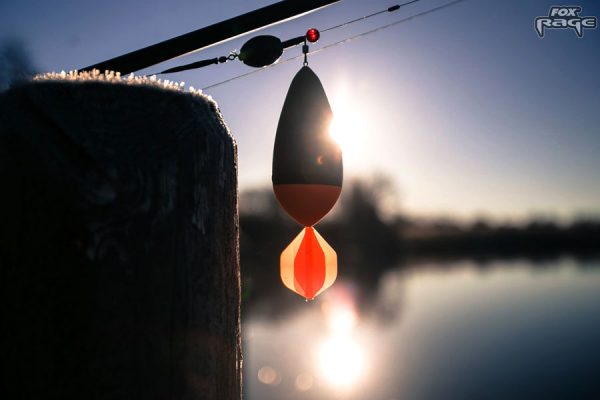
Roving Floats Are Great For Covering Water
Inline/Slider Float
The slider float is a great all-round float, mainly used for bait fishing from a boat or fishing in close to the margin. The slider float is set a couple of feet over depth and is highly visible on the surface.
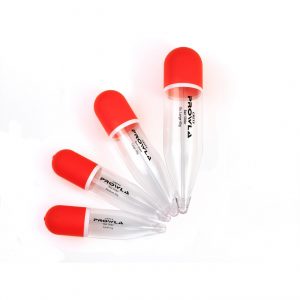
Slider Float
Pencil Float
The pencil float is a very sensitive float that is highly visible on the water. Mainly fished from the bank, just like the slider, it is set a few feet over depth. To ensure the float is set correctly, make sure the float cocks correctly, if the float sits slightly cocked and starts to drift, the float and rig is set to shallow. If the float is lying on its side, the float is set well over depth.

Pencil float
Free Roving Float
These floats allow you to cover plenty of water by fishing your bait in the upper layers of the water. You can have the float drift down certain areas or margins and can be a deadly method on the right day.
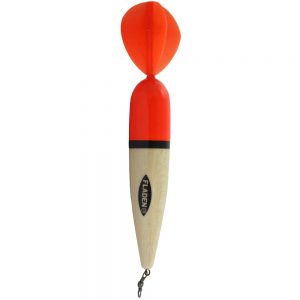
Free roving float
Rear Drop Off Arm Indicator
This is the more traditional pike fishing indicator. To set this up correctly, the line should be taut after casting out and letting your line settle, place the rod on the bank sticks/rod pod and then flick the bail arm over and clip the rear swinger onto the line tight to the reel spool…viola!…simples! It is vital that the line is always tightened down to the lead and bait. When a pike takes the bait and moves off away from you, the rear drop off indicator will unclip and drop off; when the pike swims towards you the line will not be released from the clip when the indicator drops.
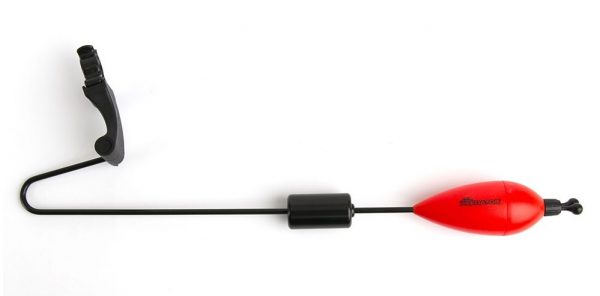
Rear bite indicator
Front Arm Swinger Indicator/Bobbin
As aforementioned the line should be taut at all times, the front arm swinger is located below the bite alarm, it connects straight to the line, it allows you to determine if the fish is swimming towards you (indicator will drop) or swimming away from you (indicator will rise up) during a progressing run.
Audible
Electronic bite alarms are great audible bite indicators to alert you when you bait has been picked up by a pike. For best results keep your line tightened down to your lead and rig and ensure the line is running over the bite alarms rollers. The majority of modern bite alarms have three settings: a volume control which can be set low if fishing in the margins and to stop spooking wary fish, tone setting to set to a pitch of your preferred choice and a sensitivity setting, which allows you to set the line travel distance on the roller do distances of up to 2 inches on average. This allows you to set your indication on your fishing conditions, i.e. if you were fishing in very windy conditions, decreasing the sensitivity by increasing the line distance travel on a bite alarms roller will compensate for any undertow or wave motion.
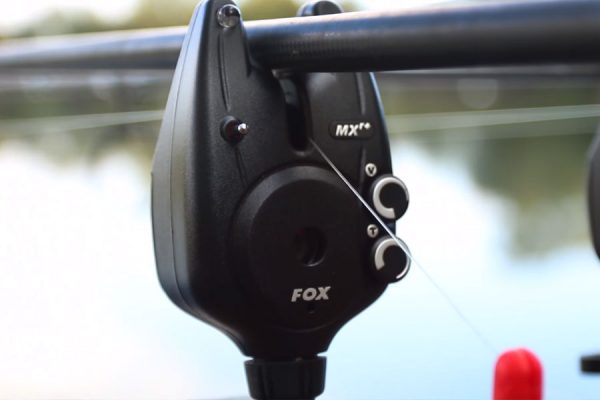
Bite Alarms Provide Sensitive Bite Indication
TERMINAL TACKLE
Line
When it comes to choosing the correct fishing line, there are various brands and breaking strains available and it can become quite confusing choosing the correct line for the right applications. There are two types of lines we recommend: monofilament lines or braided lines.

15lb – 20lb monofilament is recommended.
Monofilament Lines
Monofilament lines in 15-20lb breaking strain are recommended. This breaking strain of line is heavy enough to deal with hard fighting fish but also strong enough to pull your terminal tackle out of snags if the need arises.
Pros
- – Abrasion resistant
- – Breaks above its stated breaking strain
- – Good knot strength
- – Casts smoothly
Braid
Braided lines are made up of woven fibres of man-made materials such as Dacron, Spectra or micro-dyneema into a strand of line. We recommend 65lb breaking strain braided lines and this is based on the diameter of the line. A general rule of thumb is to match the diameter of a braided line to the same diameter of monofilament line that you would use for pike fishing. So, in this case, 15lb monofilament 0.370mm against 0.36mm of 65lb braided line.
Pros
- – No stretch, so keeps you in contact with the fish.
- – Low diameter and higher breaking strains compared to conventional lines.
- – Line has no memory, so does not coil like conventional lines.
- – Better life span than more conventional lines – can be more cost effective.
Fishing Weights
We recommend using fishing weights from 1.5oz to 3oz, this is dependent on your fishing conditions and the size of the bait being used. In conjunction with your lead, a weak link is recommended, this is required if your lead snags up on the bottom, you can break the weak link to recover the rest of your rig, this saves leaving a baited trace in the water. Weak links can come in the form of a monofilament link or a weak safety lead link/clip.
To gain optimal distance in a cast, we would recommend using a smaller bait with a heavier lead. For example, an eel or lamprey section with a 3oz lead could be cast a long way. However, using a large mackerel tail in conjunction with a smaller lead will create a more balanced rig and will help you to cast more efficiently and accurately.
Weight/fishing lead shapes are also important but this can also come down to personal preference. Here are a few examples of our best sellers:
Distance leads do exactly what they say on the tin! They are streamlined leads and help assist in increasing distance.
Flat pear leads are designed to sit snug on the bottom and keep your rig presentation tight to the bottom.
Inline leads can help increase casting distance and also help streamline your rig. We only recommend using inline leads if you know the swim you are fishing is snag free.
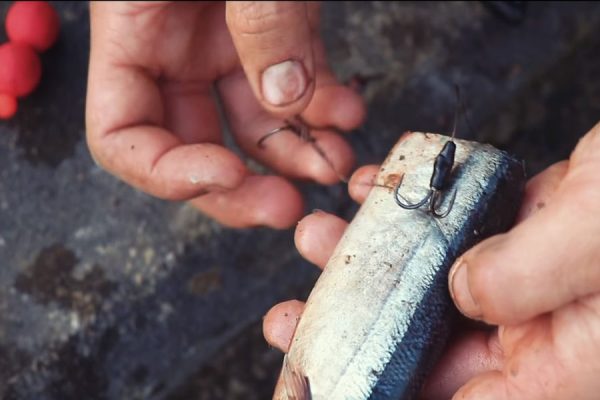
Match The Hook Size To The Bait
Wire Traces
Wire traces are essential when it comes to pike fishing. With over 600 teeth in their mouth, pike have the ability and carry the heavy artillery to cut through any conventional leader types like monofilament and fluorocarbon. A wire trace of minimum of 18 inches is required. A wire trace comes with 2 semi barbed treble hooks, the top treble hook is placed in the tail root of the bait, while the second treble is located halfway down the flank of the bait. We sell pre-made wire traces by reputable brands (ideal for beginners) and we also sell all the products and tools to make them yourself – why not give it a go? Our predator angling experts would be happy to show you the ropes.
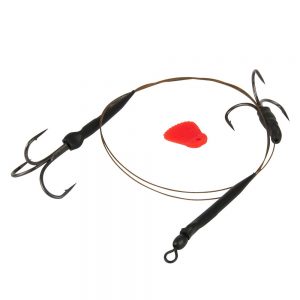
A wire trace stops a pike biting through your rig,
Run Rings and Buffer Beads
Attaching the fishing lead to a run ring via a weak monofilament link or weak snap link, will minimise resistance when a run progresses. The line is threaded through the run ring, then followed by a rubber buffer bead, this stops the run ring from possibly damaging the knot connected from your mainline to your wire trace and it also stops the run ring and lead running down onto your trace due to the large bore size of the run ring.
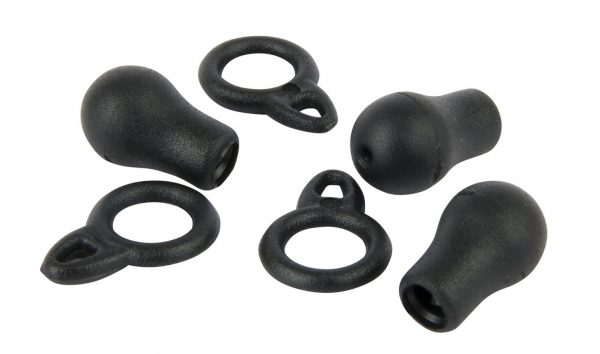
Run rings and buffer beads
Quick Change Trace Links
After a pike is landed, it can become a struggle to move a specimen sized fish about the bank in a landing net and carry a rod at the same time. Quick change trace links eliminate that problem, by attaching a quick change trace link to your main line, then connecting the wire trace to the quick change trace link, you can easily unclip the wire trace from the rest of your pike rig and rod, so you can deal with the fish and the unhooking of the fish more easily.
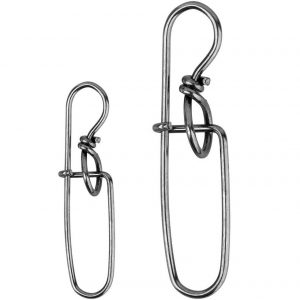
Staylock snaps
Hooks
Semi barbed treble hooks are used for attaching to your baits, the barbs of the treble hooks are located within the bait, so only the barbless points are exposed. This makes for easier unhooking.
Treble size is dependent on bait size, the most common treble hook sizes are 6, 4 and 2.
- Size 6 – Ideal for smaller baits, 4-5inch e.g. sprats, small trout etc
- Size 4 – Is the general and most common size used, ideal for 5-7inch baits. e.g. medium sized trout, mackerel tails, herring, lamprey section etc.
- Size 2 – Designed to accommodate larger baits, 7 inch plus. e.g. big trout, full mackerel, large pollan etc

The Correct Unhooking Tools Make Unhooking Easy
Forceps and Wire Cutters
These heavy duty tools are used to help you extract the hooks from a pike’s mouth easily and efficiently and avoid damage to yourself and the fish. It is always handy to carry a spare set of unhooking tools, just in case of unwanted breakages or misplaced tools.
Long nose forceps – A general all round pike removing tool. These give you the leverage and length to deal with hooks located anywhere in a pike’s mouth.
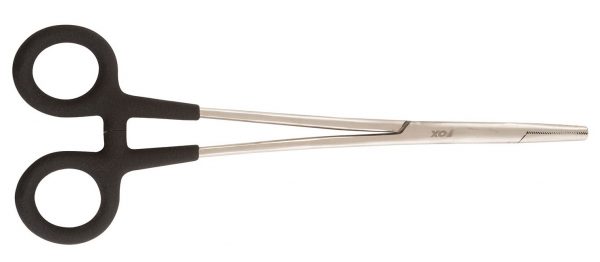
Long nose pliers – These provide a bit more robustness for those bigger hooks or to remove well-set hooks located in the harder boned areas of the pike’s mouth.
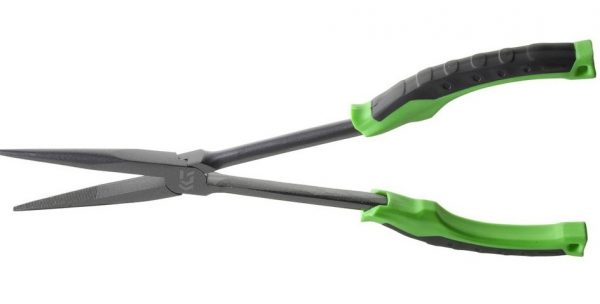
Wire cutters – These are essential for those awkwardly placed hooks or on the rare occasion a pike takes the bait a bit deeper.
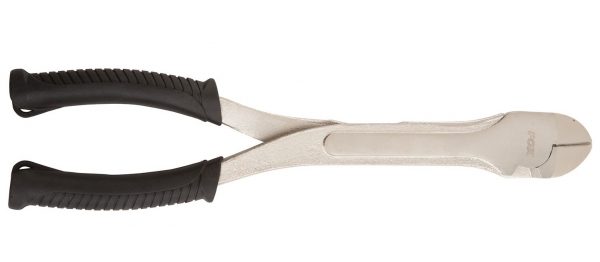
Bank Sticks or Rod Pods
Bank sticks are used with one at the front of your rod and one nearer the back keeping your rod parallel to the ground. They are ideal when you want to space your rods out to cover water but give you space to work between your rods easier.
Rod pods are perfect if you like to keep your rods confined into one small space, they are also ideal for swims that are rocky or solid where bank sticks cannot be driven into the ground. Rod pods come in all different styles as well, to suit the angler’s style of fishing.
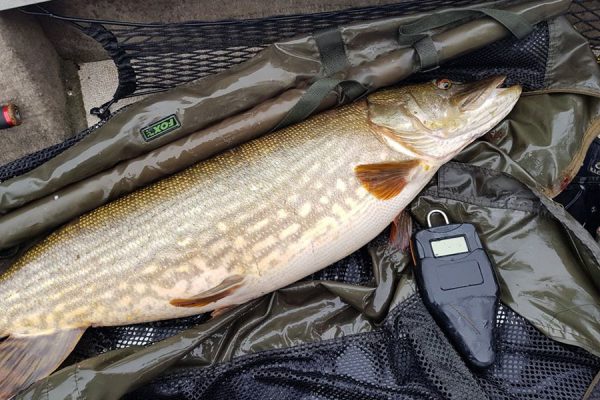
Pike Safety Is Paramount
FISH CARE
Unhooking Mat
Fish care should always be a priority; to aid this we use an unhooking mat which can protect your catch while it’s on the bank. An unhooking mat provides a protective cushion for the fish against, gravel or rocky bank sides. An unhooking mat should always be used to stop damage to the fish during the unhooking and photography process.
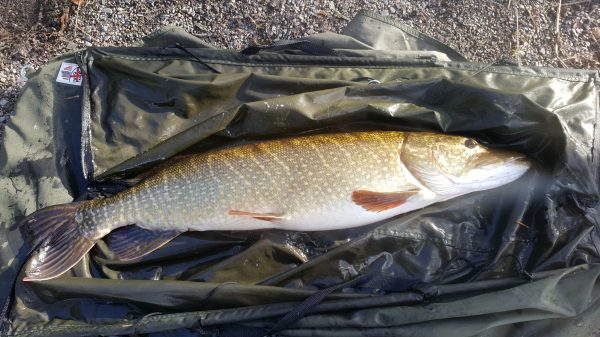
Weigh Sling
A weigh sling is a nylon based material sling that you use to weigh fish, they come with a special lining that helps eliminate the removal of the protective slime on fish during the handling process. With the use of an unhooking mat and weigh sling, the transition between the two makes fish handling safer and easier, alternatively, a combi-unhooking mat can be used. This is an unhooking mat and weigh sling combined – this may appeal to beginners, who don’t have the confidence in handling the pike.
Landing Net
As pike are strong, powerful specimens they can often be lost as you play them towards the banking. To help you land more pike and efficiently land your catch, we recommend buying a good quality and sturdy net that will accommodate the biggest of specimen pike.

Bait Choice Can Be Crucial On Tough Days
BAIT
Frozen dead bait can be easily stored and transported to your fishing venue. Our bait selection is one of the largest in the UK, we provide an amazing variety of freshwater and sea deadbaits, allowing you to cover all of you options when you’re on the bank.
PIKE FISHING LUGGAGE

Be Prepared For All Weather Conditions
Chair or Bed Chair
Putting in the hours in pursuit of a large specimen pike requires time and patience. It’s important to keep comfortable on the bank. We have a broad selection of chairs that suit everyone’s requirements, from light compact chairs for the more mobile angler to large padded chairs designed for those longer sessions.
Bivvy, Day Shelter or Umbrella
Some kind of shelter is a good idea to protect you from the elements particularly in the rain or at night. You can have a home from with a full specification fishing bivvy or a basic shelter to keep you dry and protected from the wind.
Rod Holdall
Carrying a number of rods and bank sticks along with perhaps an umbrella can be tricky. A rod holdall with extra compartments can do this with ease. Rod holdalls allow you to easily carry a number of rods already set up, safely and easily which allows you to fish more efficiently on the bank.
Rucksack
A rucksack is an essential part of your kit, allowing you to carry all you terminal tackle, food, spare clothing if needed and much more. The majority of fishing rucksacks are designed with your convenience in mind.
Bait Cool Bag
Cool bags are essential to keep your bait in prime condition, especially over longer fishing sessions. A good bait cool bag will also save you money in the long run and reduce the amount of refreezing of dead baits, which in turn will stop the quality of your bait deteriorating.
Pike fishing is a super fun way to catch specimen sized fish and we do recommend that you give it a try. Please try and fish with someone with experience, this will save possible damage to yourself and the fish.
Please feel free to contact our team of experts for any further advice or tips on pike bait fishing.

